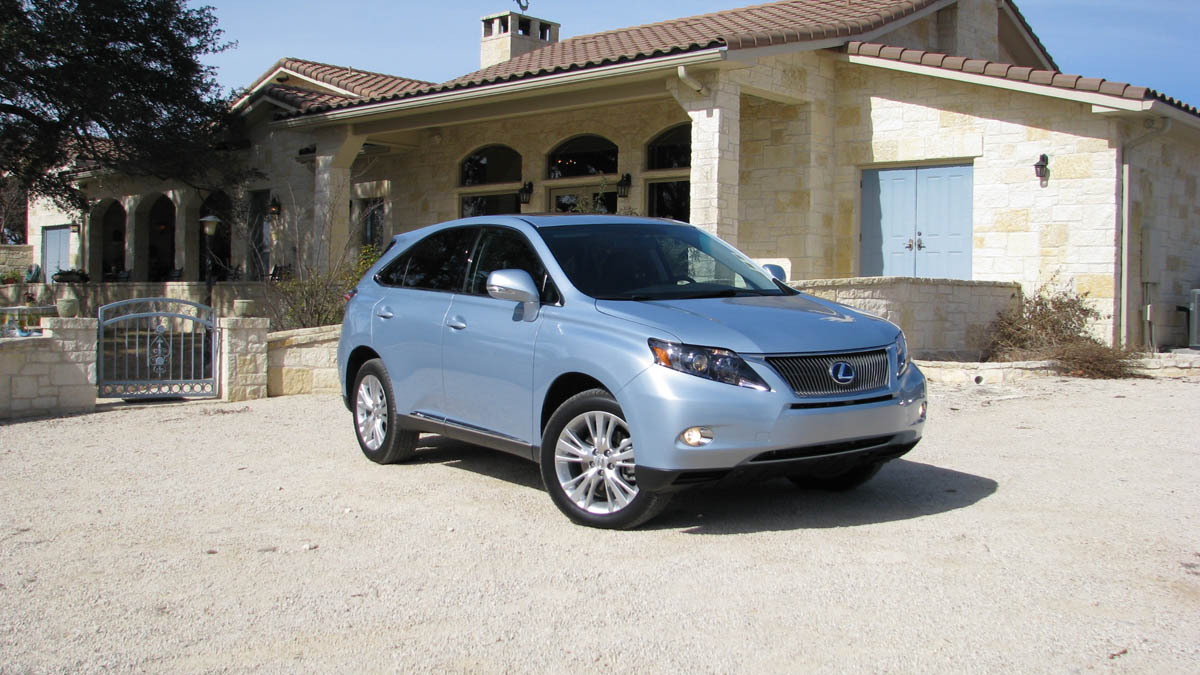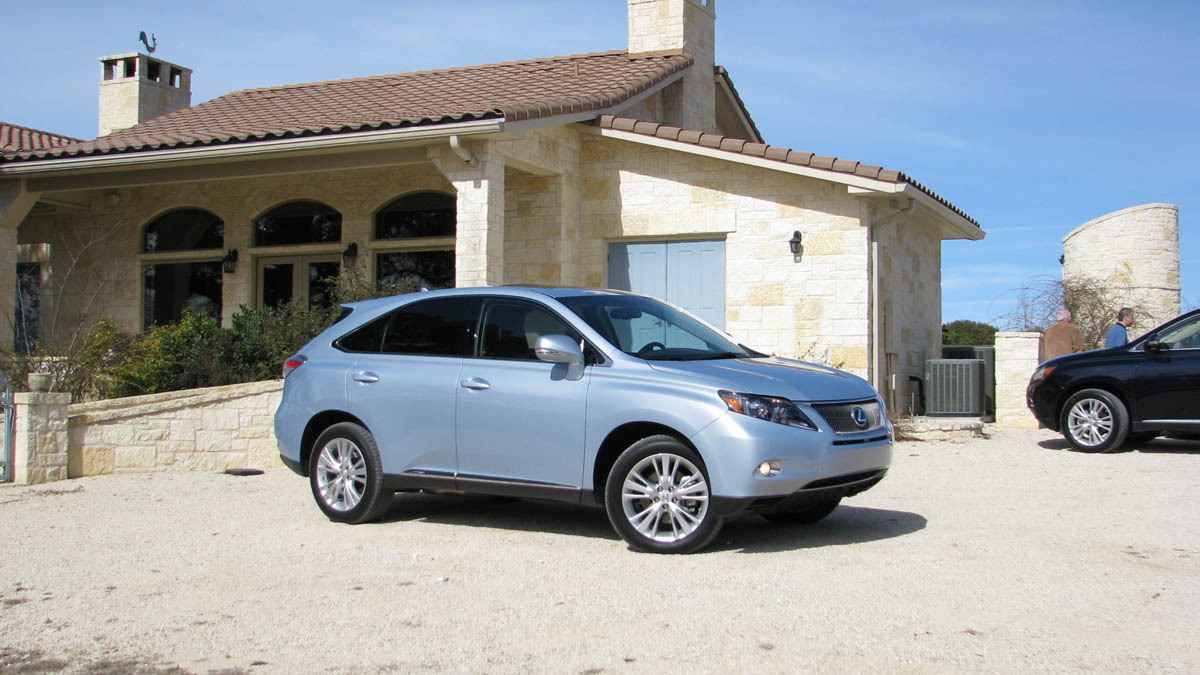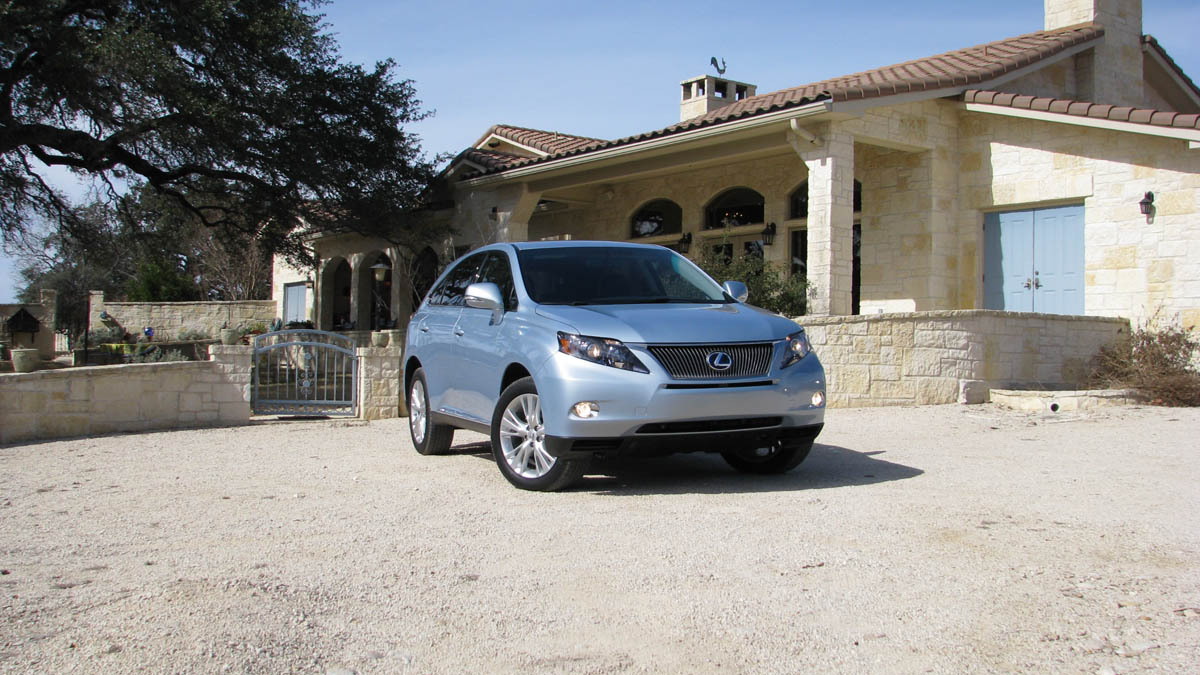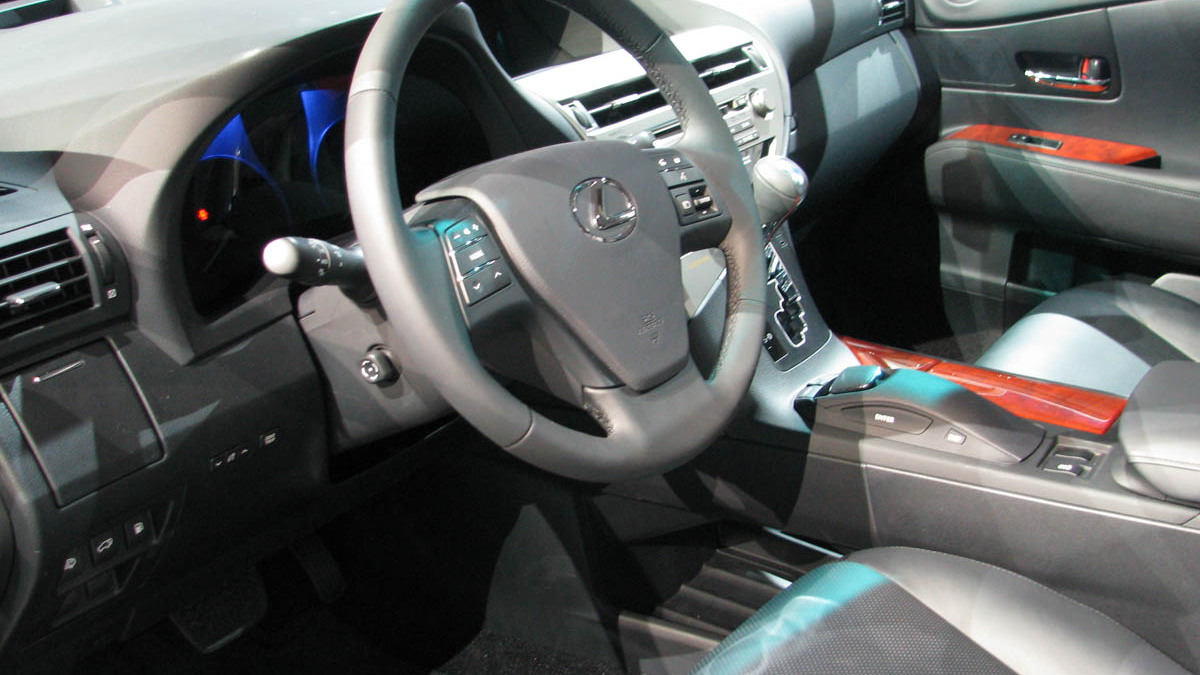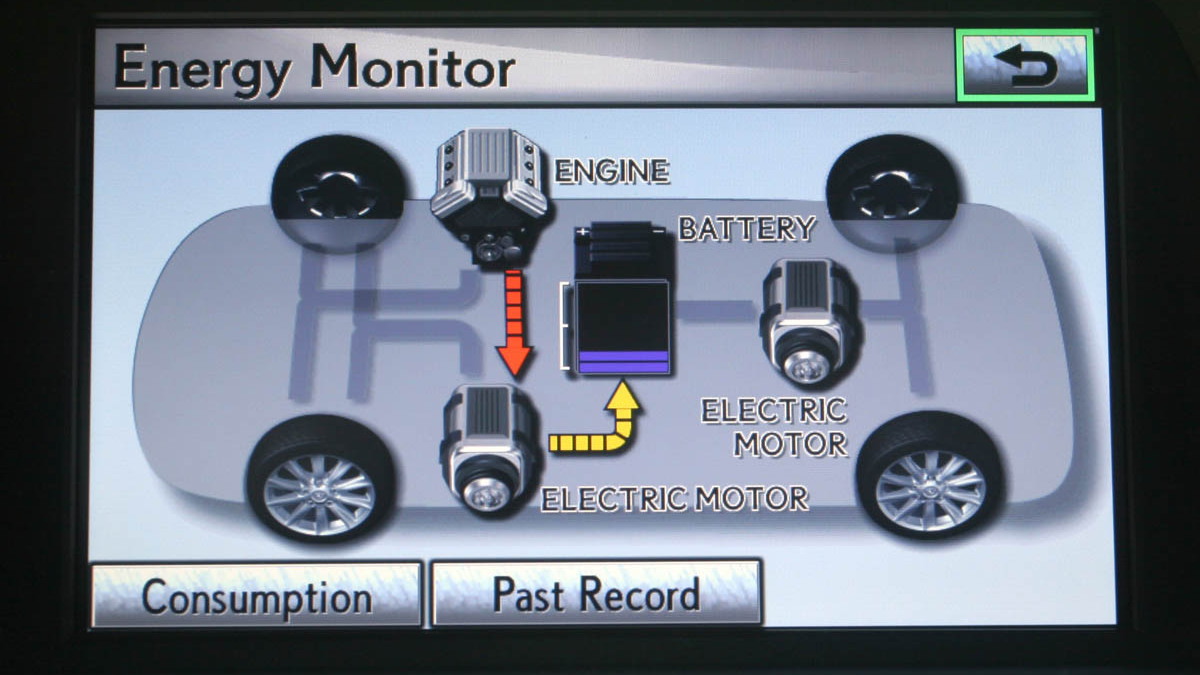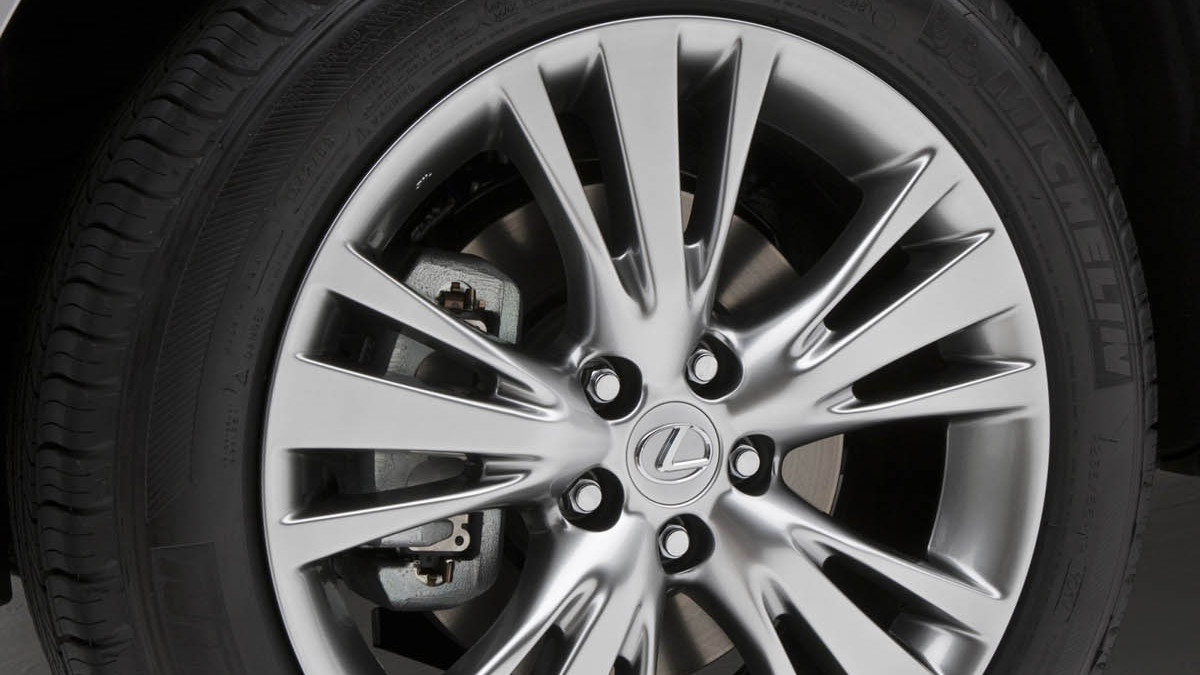Launching a new vehicle - especially a luxury vehicle - is a difficult thing to do at any time. Doing it during the worst economic downturn of the past several decades is all the more challenging. And when that ill-timed luxury vehicle happens to be a de facto member of the much-hyped but ultimately smaller-than-expected crossover segment, things are downright tough.
Which is a roundabout way of saying that while flying down to San Antonio to get a taste of the new 2010 Lexus RX 350 and 450h, I wasn’t expecting to be bowled over. Sure it's the segment-defining mid-size luxury crossover, but it’s not precisely exciting when hung against a backdrop of fuel-gulping V8s or even super-high-tech plug-in hybrids.
So color me surprised when I actually found some really interesting new features in the RX - most notably a new control interface for a new navigation and information system, called Remote Touch. This is the real highlight of the new RX, and will soon be found in other Lexus vehicles, including the all-new HS 250h.
Design and Materials
Effectively combining the functionality of a mouse and a trackball, the Remote Touch system allows comfortable and intuitive use of the relocated navigation (on equipped models) or audio/entertainment display. The move away from a touchscreen format allows the panel to be placed closer to the driver’s line of sight, which is a welcome change, while the easy-access control unit keeps the driver’s hand close to - though not on - the wheel.

The Remote Touch input device makes for a truly intuitive experience
For those unwilling even to use hands to control the system, Lexus has included a speech recognition system, based around VoiceBox Technology’s Conversational Voice Search that more easily interprets casual phrases - meaning users aren’t locked into a fixed menu of verbal commands, but can speak freely, allowing the system to cue on key words. For instance, instead of saying “Weather,” and waiting for a sub-menu, you can say “What’s the weather like in Wichita Falls?” and the system will start the weather-searching process. Handy, and hands-free.
The cabin of the 2010 RX applies what Lexus calls its “L-Finesse” (not to be confused with ‘elfinesque’, though the coincidence is uncanny) design philosophy. Separating the center stack into two clear regions via sweeping curves and contrasting colors, the new theme gives a decidedly modern but not obtrusive style to the interior.
The instrument panel directly in front of the driver also gets some high-tech treatment in the form of an Organic LED (OLED) display panel beside the speedometer. In addition to being thinner and lighter than typical LED panels, OLED displays are also brighter and easier to read - a key element of a display likely to be washed out by bright sunlight. The OLED panel does an admirable job of remaining readable even in the harsh sunlight of south Texas.
Materials still feel a bit lacking in the RX, but it’s a complaint common to all Lexus vehicles. The leather is nice, but it feels overly processed and chemical-laden, rather than the luxurious and pampered feel one finds in German or Italian leather. Similarly, door panels, dashboard elements and headliners feel somewhat cheaper, emitting hollow sounds when thumped. Mercedes and BMW, though still not perfect in their implementations, have risen above this level of construction in recent models.
Fuel Economy

'L-Finesse' design language in the center stack
Neither variant uses direct injection, however - another surprise, given the availability of the technology in similar engines throughout the Lexus lineup. Lexus officials at the event said that the efficiency and power gain simply didn’t justify the cost in this particular application. That’s an odd outcome, especially given the rather weak performance of both cars on a two-hour jaunt through the Texas hill country.
The RX 350, piloted by a trio of journalists, managed just 20-22mpg in none-too-spirited driving at constant 60-70mph speeds. The RX450h only fared marginally better, at 22-23mpg in identical conditions. The hybrid’s strength admittedly lies in city, rather than highway, driving, but even in our limited time in town, the crossover’s efficiency rating never climbed above 26mpg.
Performance
Neither vehicle is geared, in presentation or demeanor, toward vicious performance, and both live up to that reserved image. Stately comfort - check; easy driving - check; fairly quick acceleration - check; corner-hugging grip - wait, what?
A fair amount of body roll - standard fare for the segment, but outright disconcerting if your daily driver is a sports car - is to be encountered on moderately quick turns, or under sudden maneuvers. It’s not an unsafe amount of body roll, however, and once accustomed to it, it’s even a bit reassuring - you know you’re cornering by the angle of the horizon as much as by lateral g-forces.
The 275hp to 295hp (205-220kW) engines provide enough pep to make passing easy, and the smooth-shifting transmissions are good enough to prevent you from even noticing their operation, but don’t expect the RX to be your black-horse stoplight king. From a stop, the RX prefers smoothness over speed, and under braking it is stable, but never sudden.
Overall first impression
Not exactly parsimonious with fuel, but highly advanced in certain technological aspects, the RX is a vehicle that rightfully sits at the top of its segment. So far few true contenders to its position have emerged, though the BMW X3 and Mercedes-Benz GLK are arguably gathering their strength. Having experienced both the RX and the new 2010 Cadillac SRX - though not on the road with the latter, lamentably - within a 10-day period, I’d put the new Caddy crossover at the front of the list of Lexus’ true competitors. Until any challenger proves its merits to be greater than those of the RX, however, it remains the undisputed king.
_______________________________________
